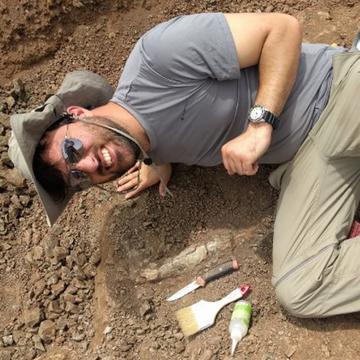
Evolutionary radiations are of great interest for paleontologists and evolutionary biologists, although their biological drivers remain poorly understood. It is assumed that during evolutionary radiations evolutionary rates (phenotypic transformations per million year) increase substantially. To test if this scenario applies also to basal iguanodontian dinosaurs, which underwent their major radiation in the time range which comprises Upper Jurassic and Lower Cretaceous, we will embody a multidisciplinary approach to comprehend this crucial evolutionary step. First, we will build a phylogenetic data matrix which will result from the revision of neglected Portuguese and European taxa, with the integration of the stratigraphic data. The analysis will be carried out in a Bayesian environment, which will produce the most-up-to-date phylogenetic framework hypothesis for basal iguanodontians. This will be coupled disparity analysis of disparity, and historical biogeography reconstruction.